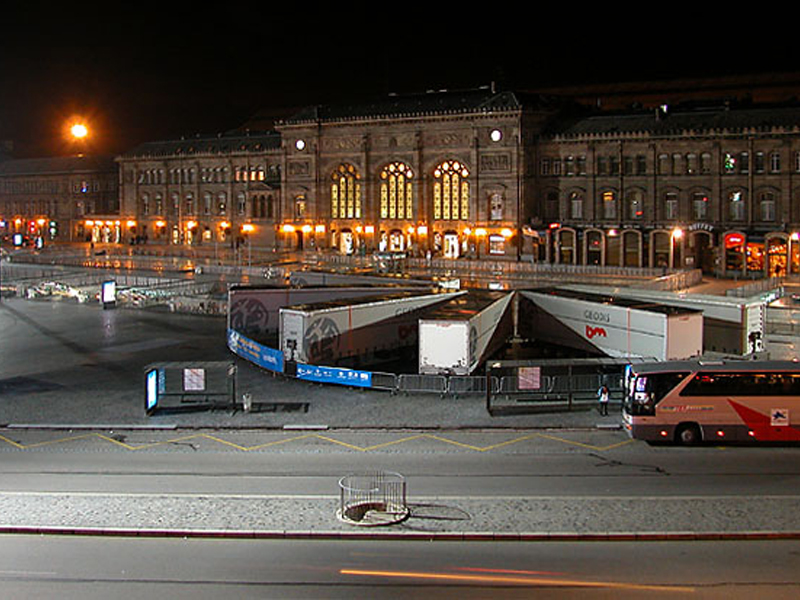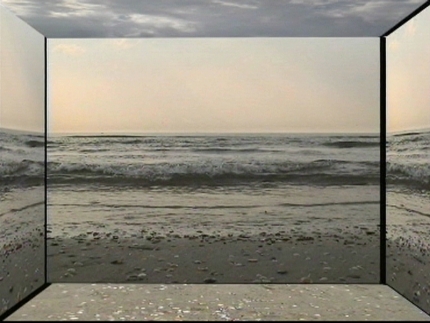Exhibition
From 05 October 2002 to 08 June 2006
STRASBOURG / THESSALONIQUE

ARTISTS: NORBERT FRANCIS ATTARD / MICHAEL BIELICKY / ACHILLEAS KENTONIS / ENDRE KORONCZI / JERZY KORZAN / ANDRZEJ MIASTKOWSKI / MARIA PAPACHARALAMBOUS / MINDAUGAS SIMKUS / NIKA SPAN / JAAN TOOMIK / ANITA ZABILEVSKA / JANA ZELIBSKA
CURATOR: DIMITRI KONSTANTINIDIS, DIRECTOR OF APOLLONIA

Central train station square, Strasbourg
5-27 October 2002
European Parliament square, Strasbourg
19-24 November 2002
Macedonian Museum of Contemporary Art, Thessalonique
23 May – 8 June 2003
The exhibition you are going to visit is a little unusual… The only reason is that instead of moving from one room to another, you are going to visit a succession of lorries. These juggernauts have been fitted out as exhibition halls, as they have a particularly symbolic connotation. They are the ideal representation of travel, movement, international encounters and so on.
This event is the proof of a desire to promote exchanges not only between artists but with the public too, who is given the opportunity to discover new ways to see and think.
The lorries are also the symbol of the route towards joining the European Union, for candidate countries such as: the Czech Republic, Cyprus Estonia, Hungary, Latvia, Lithuania, Malta, Poland, Slovakia and Slovenia.
In a few words, this exhibition is making its own contribution to strengthening the cultural plurality which is the essence of a multiethnic Europe.
“The Paths to Europe” is an artistic event that revolves around the themes of exchange and mobility. The artworks are displayed in the backs of lorries, and this takes them out of the usual and official circuit of museums and galleries. These rather unorthodox articulated lorries constitute a kind of “art caravan” which purpose is to meet the public. For the five participating countries, this exhibition is a unique opportunity to emphasise on the quality of their artistic culture and on the “know how to do” precisely at this moment that these same countries are knocking on the European Union’s doors.
The density and the complexity of contemporary creation has been brought to a real crossroad of new destinations and pathways. These pathways are directly connected to tragic histories and in the same time to glorious moments, and constitute the essential means in order to meet and cross the European artistic plurality.
The analogy with a road network is perfect: criss-crossing, speeding along, travelling and discovering unexplored cultural paths, reducing the distances between heritage of the past years and new technologies, between original modes of expression and the public, between traditional institutional venues and unexpected spaces for exhibitions.